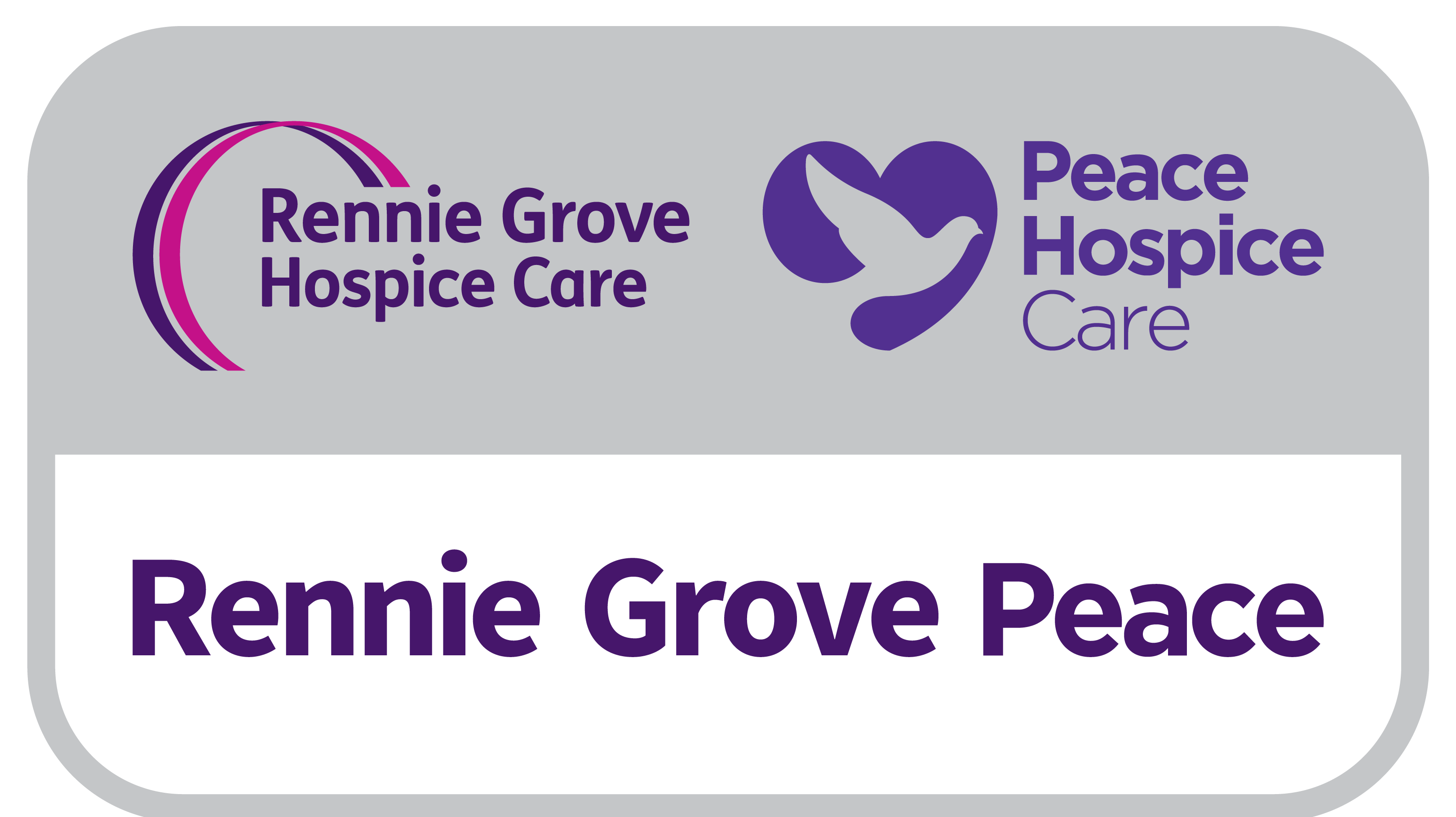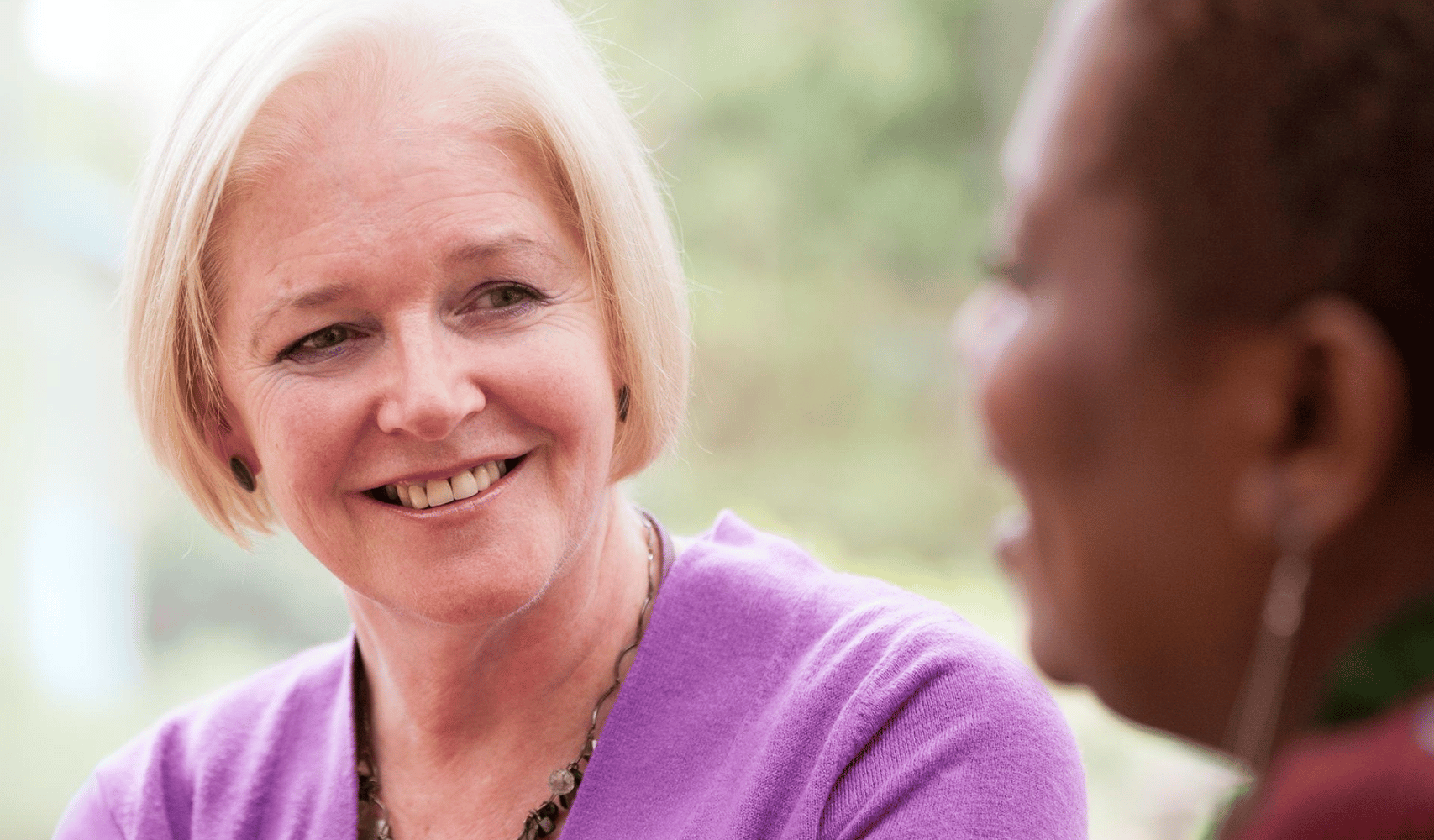“I remember one woman saying to me at the day hospice ‘When I’m here, I’m the person I want to be’. She explained that we saw her as a person and not just as her cancer diagnosis.” – Joan Follett
In 1994, Joan Follett was not actively looking for a new job but she believes that fate led her to apply for the post of staff nurse in the newly opened day hospice in St Albans. When she walked into Grove House “something just clicked”. Thankfully she was offered the job and spent the next 25 years providing emotional and clinical care for patients at the day hospice.
She looks back on her working life at Grove House as being extremely happy and fulfilling and remembers her young teenage son at the time saying to her “I hope when I get a job, I will be as happy as you are in yours.”
Joan says, I truly believed in what they were trying to achieve at Grove House, and in the type of care they were offering”
“True hospice care offers a holistic approach that simultaneously addresses the physical, emotional, social and spiritual components of a person’s health. This approach was evident at Grove House from the very beginning and was what drew me to working there. We were very lucky to have the time and resources to be able to provide this type of care. I also feel lucky to have had the opportunity to work with like-minded colleagues. To this day, I remain in regular contact with four other nurses I worked with at Grove House and we often meet up to share our precious memories of working there.
“I could see just how much the families and patients gained from attending”
“Some patients were initially unsure about attending the day hospice as many imagined it to be a sad place and a case of just sitting around talking about illness – but the exact opposite was true! We provided a safe space where people could come together and focus on living life. We helped people find ways of coping with what they were going through. It was rewarding to see the patient relax and start ‘living life’. Indeed, I remember a young man who was very unsure about attending, saying to me after coming for a few weeks ‘I didn’t know what I was missing until I experienced it.’
“There was a lot of laughter at our sessions”
“When people discover that you work at a hospice, they often assume it’s a sad and depressing place. Of course, by the mere nature of the job there were sad times – but overall it was a very positive and uplifting environment. Patients were able to be themselves and were able to talk openly and freely about what they wanted without any awkwardness. Humour was often used and at times the room was so noisy with all the chatting and laughter.
“The service we provided was all about respecting and valuing the needs of the patient and their family”
“In the late 1990s we started providing clinical placements for student nurses from Hatfield University. The student nurses would spend up to twelve weeks in the day hospice learning how to look after patients with cancer and other life-limiting illnesses. The nurses at the day hospice believed that good communication was key and the base to any effective patient intervention, so all aspects of communication including listening to the patient, were addressed with the focus always on respecting and valuing the person as an individual.
“We were constantly assessing and addressing the patients’ physical and emotional needs”
“The day hospice, like all hospice care, provided a holistic approach and supported the whole person, addressing their physical, emotional, spiritual and social needs.
“The day hospice nurses regularly assessed and addressed the patients’ physical needs including managing their symptoms. This care was seen as proactive rather than reactive – which in many cases often prevented further problems. Patients told us that they felt secure knowing that they could address any concerns at their weekly appointments with their day hospice nurse. We were their safety net.
“After we merged with Iain Rennie Hospice at Home in 2011, patients who had been attending the day hospice whose health had started to deteriorate, could now seamlessly start receiving palliative care in their own homes. Rennie Grove as it became known, was now able to provide care for patients from the point of diagnosis at Grove House, right through to end of life care in their own homes, and this included support and care for their family and carers.
“We were united in one clear vision.”
“When I look back, I realise that the success of the merger between Grove House and Iain Rennie Hospice at Home was down to the fact that we were united in one clear vision. Our priority was to provide high standards of holistic care to both the patient and their families, alongside expert symptom management. We were also lucky to be a charity and not have the bureaucracy and restrictions of working within a larger institution.”

